
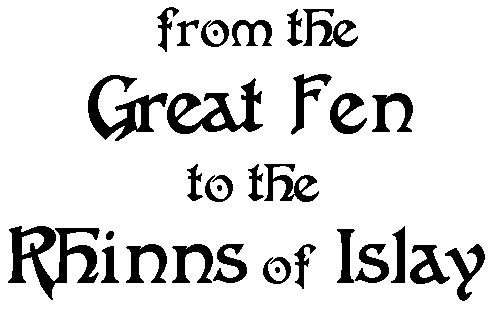
from the Great Fen to the Rhinns of Islay


27 September 2011
The North Atlantic Arc Home
| September | /Octoberrrrrrrrrrrr |
| S | M | T | W | T | F | S |
| 22 | 23 | 24 | ||||
| 25 | 26 | 27 | 28 | 29 | 30 | 1 |
| 2 | 3 | 4 | 5 | 6 | 7 | 8 |
| 9 | 10 | 11 | 12 | 13 | 14 | 15 |
| 16 | 17 | 18 | 19 | 20 | 21 | 22 |
| 23 | 24 | 25 | 26 | 27 | 28 | 29 |
| 30 |
 |
|
Tuesday 27 September 2011--The Fenland is a vast low-lying area draining into the Wash, flooded in the aftermath of
the last Ice Age, eventually forming 1500 square miles of fresh- and salt-water wetlands. There is evidence that
the Romans attempted to drain some small parts of the fens, but large-scale efforts began in the 1630s, with the
help of Dutch engineers. The intent was to create large agricultural estates for the benefit of wealthy landowners,
at the expense of locals who made their living fishing and fowling in the marshes. The scheme was successful, up
to a point--it became unsustainable by the end of the 17th century, as the drying peat bogs shrank and sunk below
sea level, flooding beyond the capacity of the windpumps built to remove excess water. A hundred years later, coal-
powered steam pumps took up the task, to the chagrin of rioting residents. Diesel followed coal, and today 286
electric pumping stations help to maintain what is now one of Britain's most important agricultural regions.
Of course, there is a new movement to restore the natural ecology of the Fens, in some small pieces, anyway. One
such effort is The Great Fen Project.
Once again, I fail to meet my expectations for the day, whiling away a foggy morning in Ely's Caffe Nero. I want to get some sense of the Fens, at least, and when I finally get away, I zigzag northwestward through the towns of Littleport and March. Along the way, I stop at Bedlam Bridge, over the Sixteen Foot Drain, one of the many channels cut to drain the land. I'm hoping to capture some essence of the Fens photographically, but it's not easy to find a visual hook in such a flat landscape. I'm just not up to the challenge today; I haven't given myself enough time for a fair shot. Add the Fens to the long list of places that need a longer and more leisurely return visit. By the time I get to Boston, the sky has cleared, and it's sunny and warm. There's some heavy construction going on in the market square, inhibiting photo ops, but on the whole it seems a charming place. I take a look at Central Park (now that's not right, is it?), and shop for a Swiss army knife in an outdoor store. I dropped mine into an outer pocket of my large bag before flying, as I always do; evidently someone from airport security was afraid I might terrorize the baggage carousels at Birmingham with my tiny scissors. Or maybe he just stole it. The big draw in Boston is St Botolph's Church, or the Boston Stump, as it is known locally, for reasons that will ever remain obscure. Boston, is, of course, Botolph's town. Botolph, or Botulf or Botwulf, was a 7th century abbot, patron saint of travelers, which should make him close to my heart. The tower of the church stands at 272 feet, 6 inches, making it the tallest parish church in England. An exhibit inside highlights the links with the American Boston, dating back to the religious dissenters who left in the 17th century for the Massachusetts Bay colony. It occurs to me to say a prayer for the rapidly fading Red Sox, but I've always assumed that the Almighty does not much care about sports. I rather doubt my prayers would carry any weight, in any case. On to Lincoln, my home for the next three nights. Along the way, I pass through localities called Bunkers Hill and New York. I'd put the population of the latter at about fifty. There are no identifying signs along the road--I imagine they gave up trying to replace stolen ones. Land in Lincoln around 5:00 and find my B&B without much trouble... only the B&B has no record of my booking, and has no vacancy. After last year's fiasco on Holy Island, I've been very careful about confirming bookings, so I'm a wee bit put out. Nothing to do about it now but go find a room. Fortunately, There is a row of B&Bs just around the corner, and the first one I check has a vacancy. The gent tells me his wife is a bit under the weather, so there will be no breakfast. Well, I'm used to that by now...he takes five quid off the price, which is fair enough. Check in and immediately go online to check the email trail on the other booking. As I thought, everything was properly confirmed. Send an email along to them pointing this out. The historic center of Lincoln is atop a hill, reached, in the direction I'm headed, via a very steep street called Steep Hill (of course). I elect to stay down below this evening--there's a row of restaurants in a relatively new development along the canal, a neighborhood called the Brayford Waterfront. I can't say I'm impressed with the one I choose, but it's food. After, I have a few pints at the Queen in the West, a local my host has recommended near the B&B. It's in the Good Beer Guide, as well. To bed fairly early...still not feeling too well, and I want to try to get up and out early tomorrow. Lots to see here. Next |
Ely to Lincoln
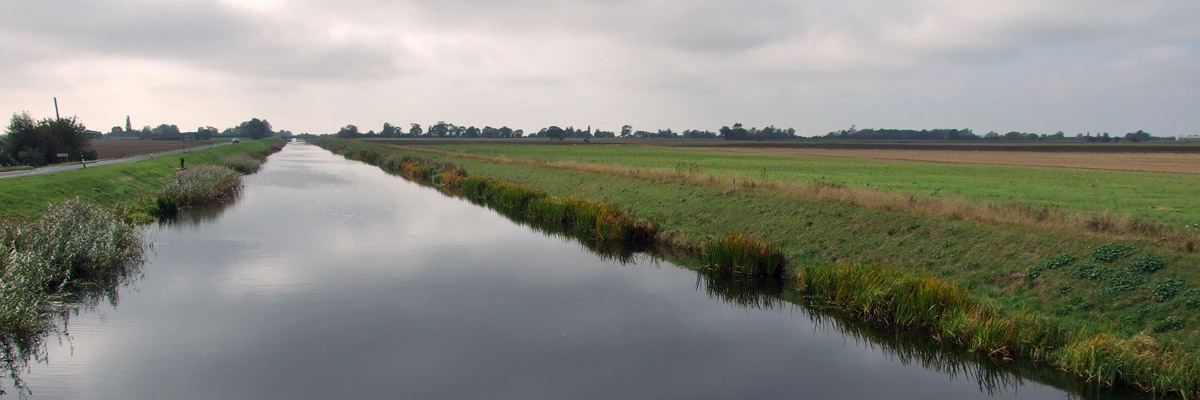 |
Sixteen Foot Drain
 |
Boston
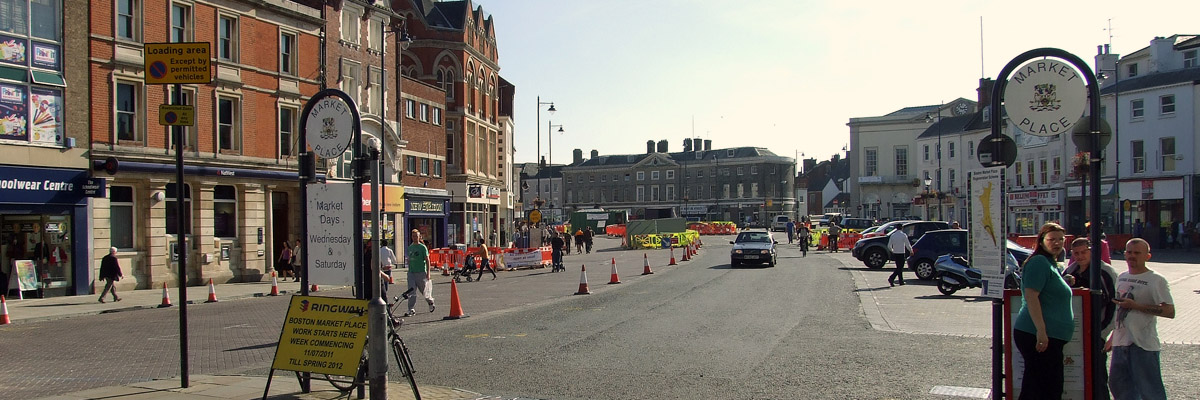 |
Boston
Welcoming committee at right
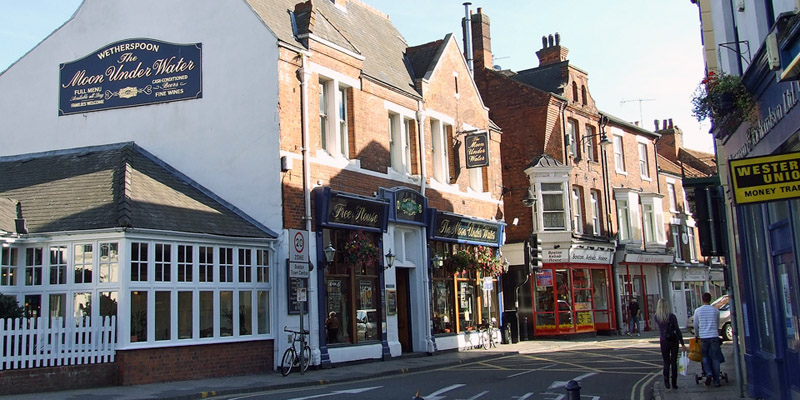 |
Boston
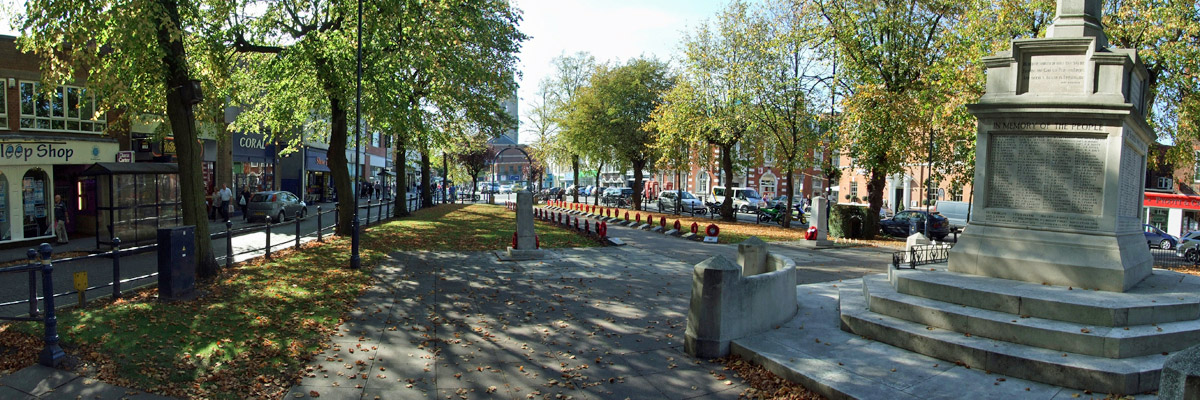 |
Boston
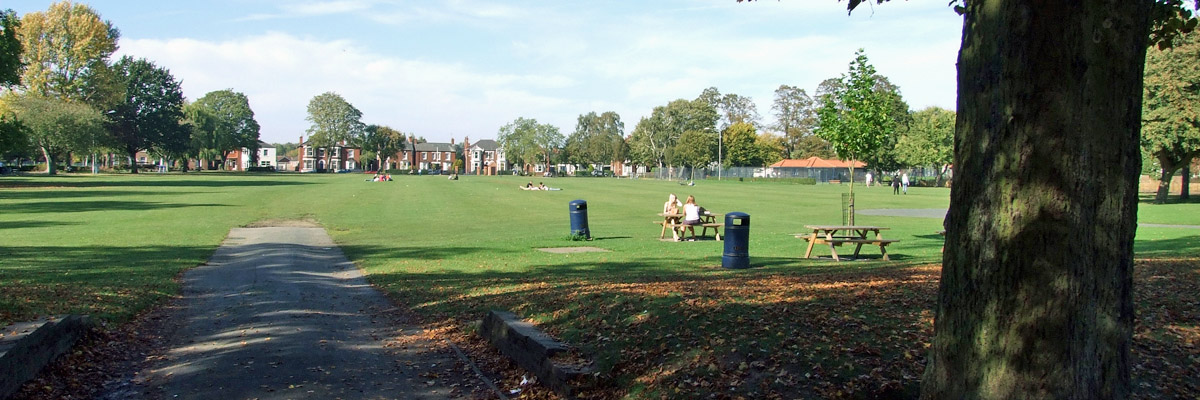 |
Central Park, Boston
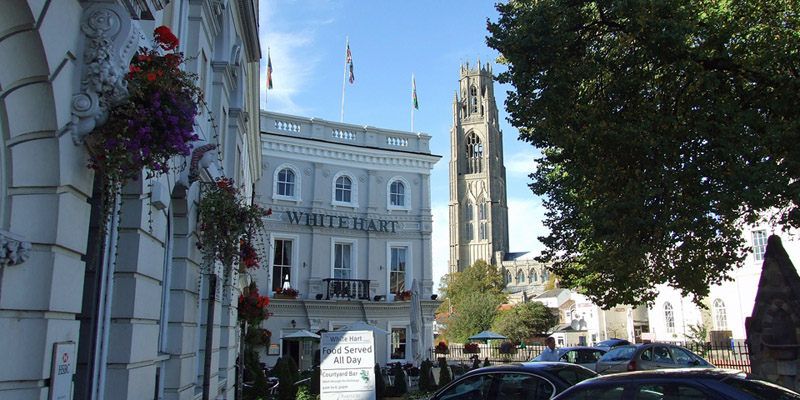 |
Boston
 |
St Botolph's Church
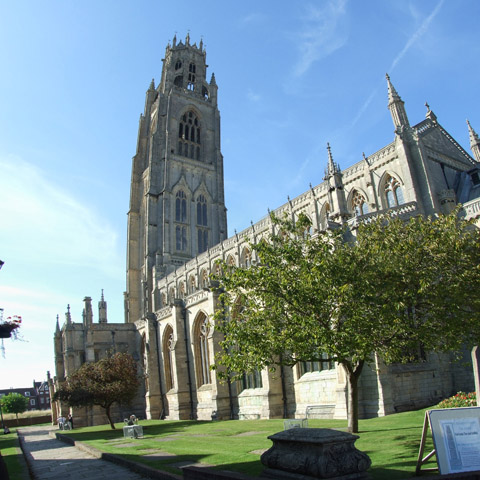 |
St Botolph's Church
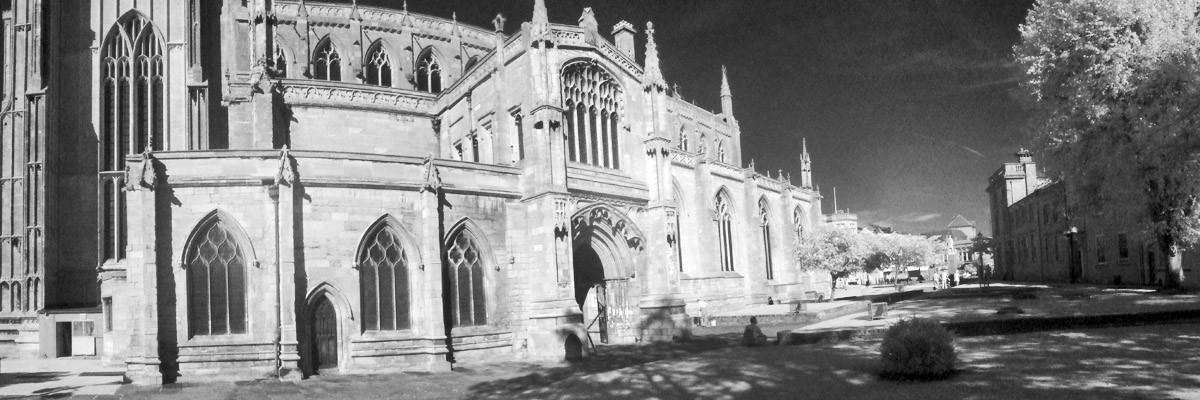 |
St Botolph's Church
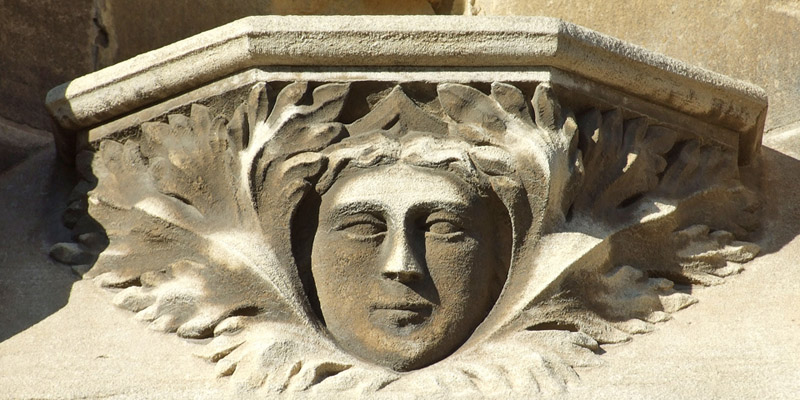 |
St Botolph's Church
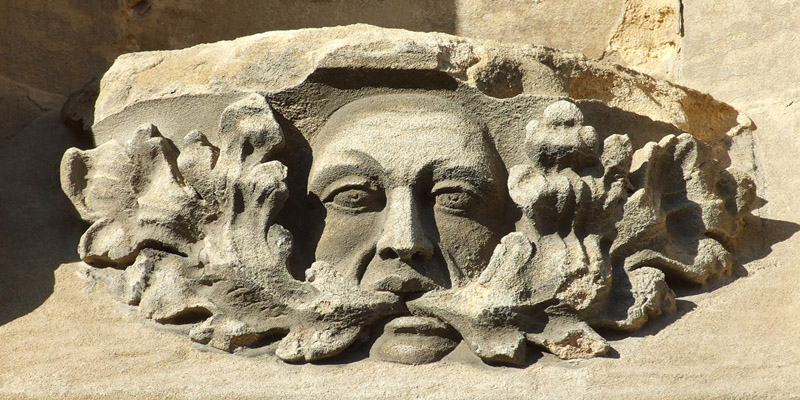 |
St Botolph's Church
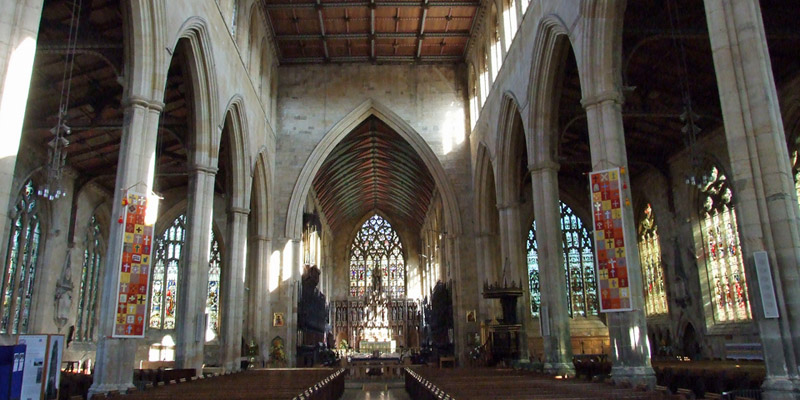 |
St Botolph's Church
 |
St Botolph's Church
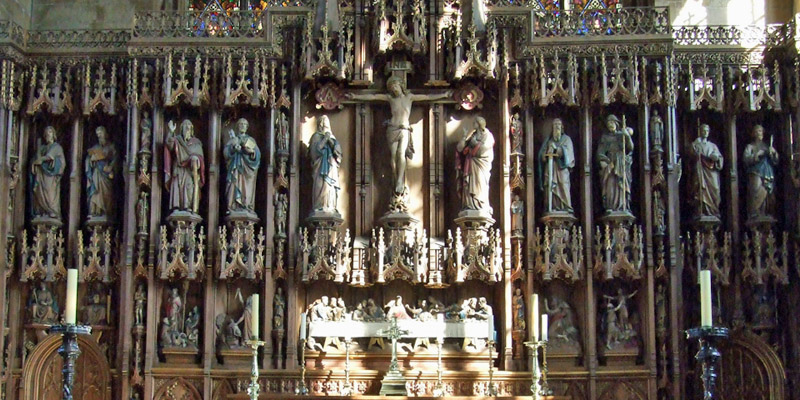 |
St Botolph's Church
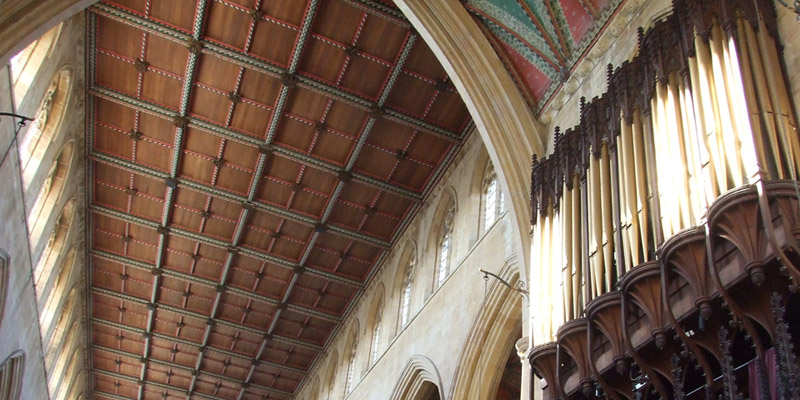 |
St Botolph's Church
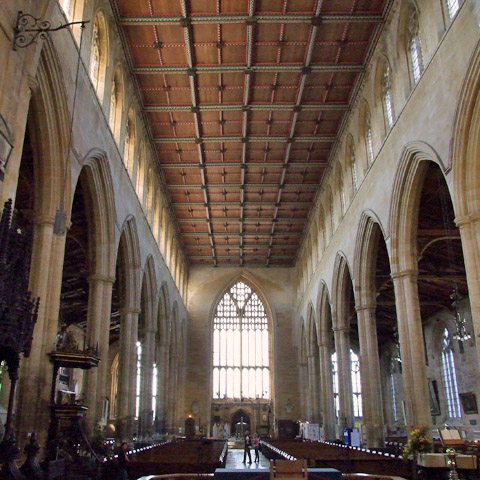 |
St Botolph's Church
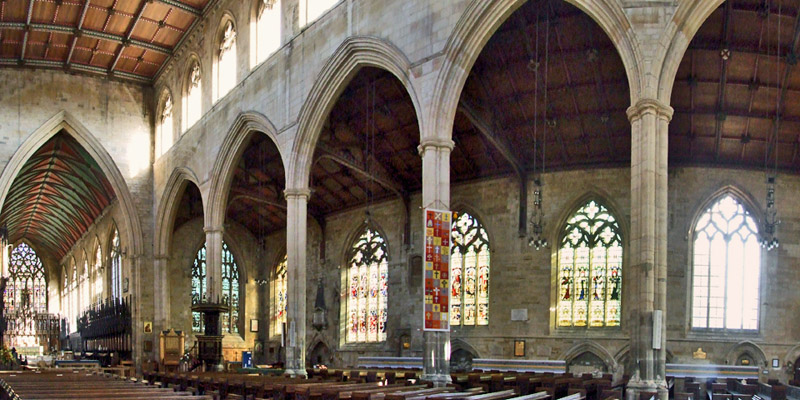 |
St Botolph's Church
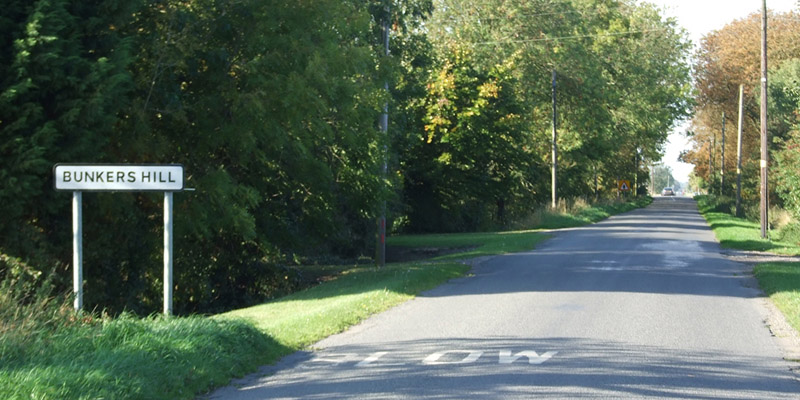 |
I don't think so
 |
A Peek Up Steep Hill
 |
The Queen In The West
Next
| September | /Octoberrrrrrrrrrrr |
| S | M | T | W | T | F | S |
| 22 | 23 | 24 | ||||
| 25 | 26 | 27 | 28 | 29 | 30 | 1 |
| 2 | 3 | 4 | 5 | 6 | 7 | 8 |
| 9 | 10 | 11 | 12 | 13 | 14 | 15 |
| 16 | 17 | 18 | 19 | 20 | 21 | 22 |
| 23 | 24 | 25 | 26 | 27 | 28 | 29 |
| 30 |
The North Atlantic Arc Home

Mr Tattie Heid's Mileage
Results may vary
MrTattieHeid1954@gmail.com